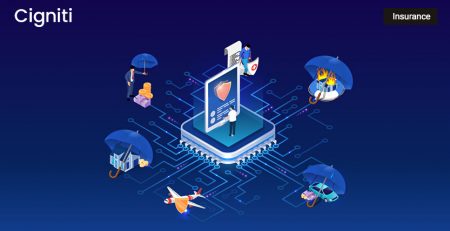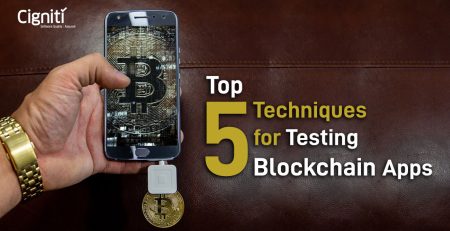How NFTs are Reinventing the Digital World
One of the technological evolutions that has caught the attention in recent times is Non-Fungible Tokens (NFTs). It has been a phenomenon, with the values of some of the NFTs reaching astronomical heights. It remains to be seen whether this will be a bubble like the Tulip Mania or the Dot Com bubble, or whether it will mature into a viable technological option. Whatever the market dynamics in terms of value, NFTs do offer use cases that can be of great interest to the current day’s digital world.
What are NFTs? NFT expands to non-fungible tokens. As a definition, we can define NFT as “a cryptographic asset on a blockchain with identification codes that distinguish them from each other.” Importantly, they can’t be traded or exchanged at equal value like cryptocurrency and fungible tokens.
The two key terms to note here are
- Fungibility which is the property of a good or a commodity whose individual units are essentially interchangeable and each of whose parts is indistinguishable from another part and
- Token, which is a digital asset that is supposed to carry a value and give a right of ownership to the possessor.
While NFT is a token, i.e., a digital asset, it is not fungible in the sense that each NFT is distinguishable or unique and hence cannot be traded for each other.
Let’s delve a little more into the various features of an NFT.
- Each NFT has a distinct personality and a distinct attribute, which are recorded in the token information.
- It possesses the ownership details that can be proven over a blockchain network.
- It can’t be broken into smaller denominations and can’t be transferred or bought in portions
- It is still easily transferable in a fraud-proof manner, being as secure as the blockchain hosting it itself is.
This leads to a popular question. Is a Non-Fungible token the same as a crypto currency? Not really.
The below table summarises the difference.
| Non fungible Tokens | Cryptocurrency |
|
|
|
|
The foremost predecessors of non-fungible tokens were colored coins. These were very small units of bitcoin with specific attributes coded into metadata using Bitcoin’s scripting language. Quantum, the first known NFT minted by Kevin Mccoy in May 2014 and was sold for $1.47m in June 2021.
A new age for NFTs began with Ethereum going live and introducing a set of token standards that allowed the creation of tokens by developers. NFT started spreading greatly through NFT gaming and metaverse projects. One of the first decentralized Ethereum-based VR platforms was Decentraland, in which gamers could build, play games, collect items, and more.
The evolution of NFTs is greatly influenced by the evolution of technology itself. There are many technology enablers that allowed NFTs to come into existence and become popular. A list of the most influential technology enablers would be
Distributed Ledger – The concept of a distributed ledger is at the heart of the blockchain revolution. A distributed ledger is a decentralized repository stored and maintained in multiple places.
Blockchain Technology – A distributed database that is shared among the nodes of a computer network, unlike the typical database where there is a central repository. The evolution of NFTs can directly be related to the blockchain technology itself.
Smart contract – a software program that can automatically trigger legally tenable actions as per the pre-defined business logic.
Cryptocurrencies – Digital or virtual currencies secured by cryptography, which makes them nearly impossible to counterfeit or double-spend. NFTs are traded through Digital Wallets of crypto currencies.
Akin to blockchain technology, NFTs can find applications across multiple industries. While there can be a wide array of use cases, some of the indicative use cases where NFTs can be deployed are,
- NFTs can be used to ensure their authenticity. Blockchain technology can permanently store information, which helps us to know the ownership and verify the authenticity.
- NFTs could be used to transfer and provide proof of ownership and even keep track of changes in value over time using timestamped NFTs. NFTs can also be used to simplify and speed up transactions, enabling smart contracts while protecting sensitive data.
- NFT tokens can also provide proof of certification and other important information that can be stored on the NFT chain and can’t be altered.
While the above are just a sample, there can be numerous applications only challenged by the lack of creativity and the costs of scaling up the physical infrastructure.
However, just like with any technology or any asset that holds value, come its own challenges,
- As more value gets shifted to the blockchain space, the possibility of cyberattacks and online fraud can increase manifold and more so as these are still nascent technologies.
- The robustness and viability of a smart contract is a prominent challenge currently faced by the NFT ecosystem. There are many instances where the NFT networks are hacked because smart contract security wasn’t adequate.
- One of the challenges faced in the NFT market is the lack of a fixed standard in arriving at the value of an NFT coupled with the gyrations in the underlying crypto currencies.
- In many cases, the owners of NFTs have no rights to copyright in the works, as they merely acquire the ownership associated with specific copies of the works. NFTs owners generally have no rights to display copies of the works in public or deal with them to an extent that can amount to public performance.
- NFT investment is still a grey area for the purposes of financial regulations, as financial institutions are struggling to clearly define what NFTs are. As on today, regulation of NFTs still remains a challenge.
Just as with a blockchain, NFTs also need a comprehensive validation framework that needs to be multi-dimensional. The major components of the testing program can be divided into three categories.
- Functional Testing spread across UI/Mobile app interface, User Acceptance, API Validation, System Integration.
- Blockchain testing centered on the four central pillars of immutability, transparency, security, and consensus.
- Non-Functional Testing with the key focus areas such as Consistency Validation, Fault Tolerance, Database Failover, Resilience, System Performance, Latency, and Synchronization.
- Security Testing encompassing Identity Theft, Static/Dynamic testing of 3rd party gateways, Network Penetration, and Network Security.
We need to give special focus to blockchain specific test elements such as configurations with respect to Data Integration and Transparency, Privacy, Network, Security, and Identity Management for an effective validation program.
Conclusion
Cigniti has a comprehensive blockchain assurance solution and the details can be found on the blog ‘https://www.cigniti.com/blog/creating-assurance-blockchain-world/’
Cigniti is one of the few IT service providers to have invested in a couple of its own blockchain sandboxes across diverse blockchain technologies. These sandboxes are designed to quickly create a viable prototype for any business application, providing a ready environment to test the viability of the concept and effectiveness of its configuration.
Cigniti offers targeted testing services for applications that include comprehensive validation methods across API testing, functional/non-functional testing, integration testing, security testing, compliance testing, and performance testing and also includes specialized testing features, such as peer/node testing and smart contract testing.
Need help? Talk to our blockchain testing experts to learn more about how NFTs are reinventing the digital world, and how Cigniti can help with making the blockchain compliant.





Leave a Reply